Physical Address
304 North Cardinal St.
Dorchester Center, MA 02124
Surgery begins with a careful preoperative analysis utilizing standardized measurements.
All tissues including bone, cartilage, and soft tissue may contribute to any one measurement, e.g., nasal length.
Nasal anatomy is considered within the context of facial shape, facial proportions, and the size and shape of adjacent structures.
Knowledge of nasal anatomy facilitates the use of an algorithmic approach to surgery that increases the predictability of surgery.
A knowledge of blood supply increases the safety of the open approach to rhinoplasty.
Most nasal problems can be analyzed by the component structures and their relationship to one another.
![]() Access video lecture content for this chapter online at Elsevier eBooks+
Access video lecture content for this chapter online at Elsevier eBooks+
A thorough understanding of nasal anatomy enables the practitioner to accurately perform reconstructive and aesthetic rhinoplasty. Rhinoplasty is recognized as one of the most difficult procedures in plastic surgery, and accomplishing predicable results is a challenging task for the surgeon.
A discussion of nasal anatomy begins with a description of the terms commonly used. These terms are the language that describes nasal anatomy, shape, and form.
Surgery begins with a careful preoperative analysis utilizing standardized measurements ( ![]() ). One must accurately describe the deformity in order to establish an operative goal. Suboptimal results often occur as a direct result of failure to recognize one or more features prior to surgery.
). One must accurately describe the deformity in order to establish an operative goal. Suboptimal results often occur as a direct result of failure to recognize one or more features prior to surgery.
All tissues including bone, cartilage, and soft tissue may contribute to any one measurement, e.g., nasal length. This is the main reason that understanding nasal anatomy is so critical to the performance of successful rhinoplasty surgery. Most nasal issues can be analyzed by individual components and their relationship to one another. Nasal anatomy is considered within the context of facial shape, facial proportions, and the size and shape of adjacent structures. The size and position of the chin, facial width, and facial height are examples of factors that may influence the operative goal.
A basic knowledge of blood supply increases the safety of the open approach to rhinoplasty. This information is also important to avoid injury to the angular artery during external percutaneous osteotomies, and to avoid inadvertent intravascular injections. Knowledge of nasal anatomy combined with the ability to preoperatively analyze the nose facilitates the use of an algorithmic approach to surgery that increases the predictability of surgery.
The nose is described employing a standardized terminology ( Fig. 18.1 ). These terms allow standardized measurements to be defined ( Fig. 18.2 ). The nasolabial angle gives an approximation of tip rotation relative to the Frankfort horizontal plane, drawn through the external auditory canal to the orbital rim. The nasofrontal angle is defined from the glabella to radix to nasal tip. Ranges exist for these measurements and vary according to gender ( Fig. 18.3 ). The normative range for tip projection, the distance from the alar crease to the nasal tip, is calculated in three ways and described later in the text. The tip-defining points seen on anterior view are located where the lateral crura begin to diverge. The crura themselves consist of three sections or parts, each with its own curvature. The pyriform aperture, best visualized on basal view, corresponds with the bony aperture of the maxilla along the inferior nasal passage ( Fig. 18.4 ).
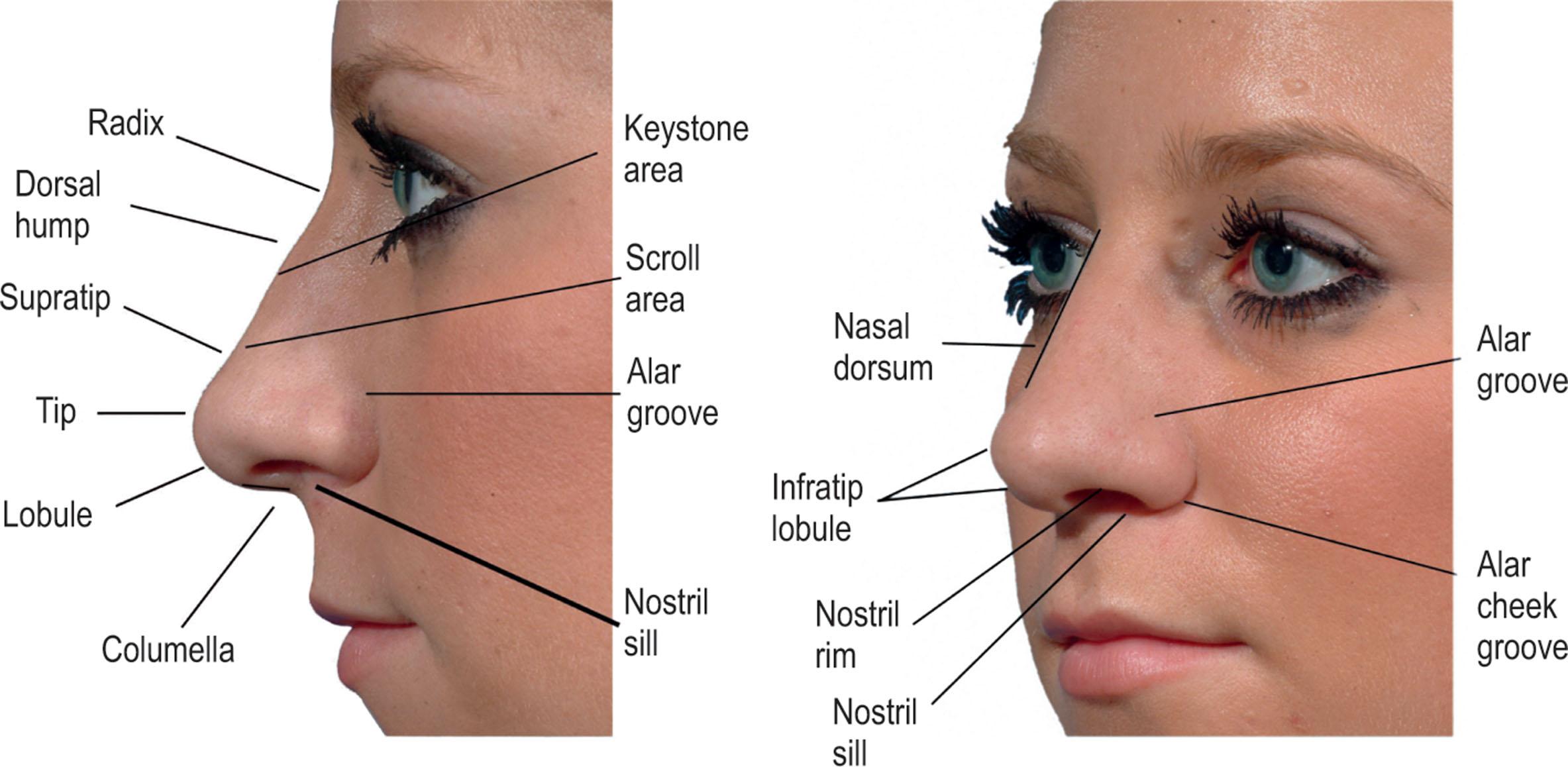
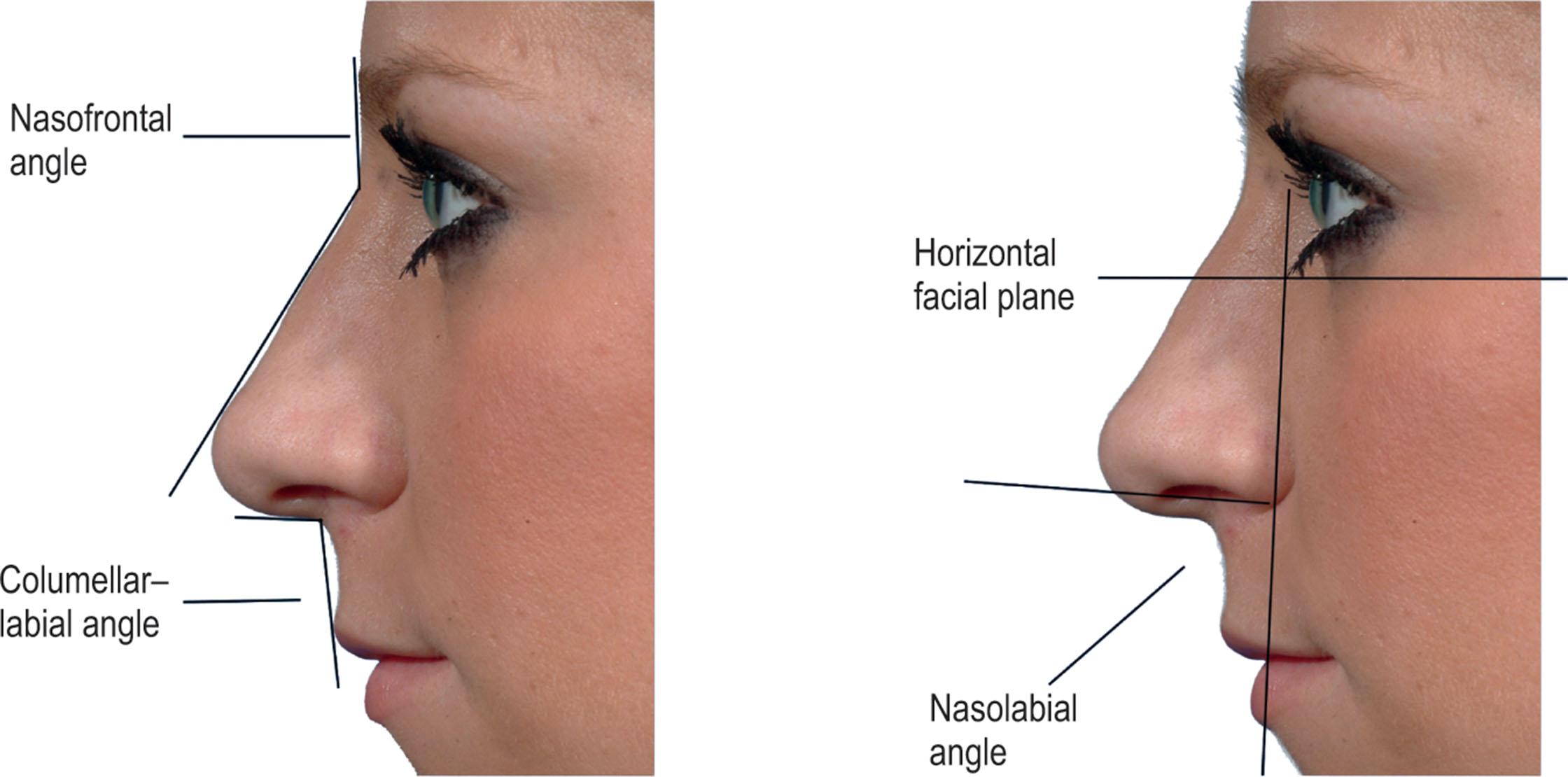
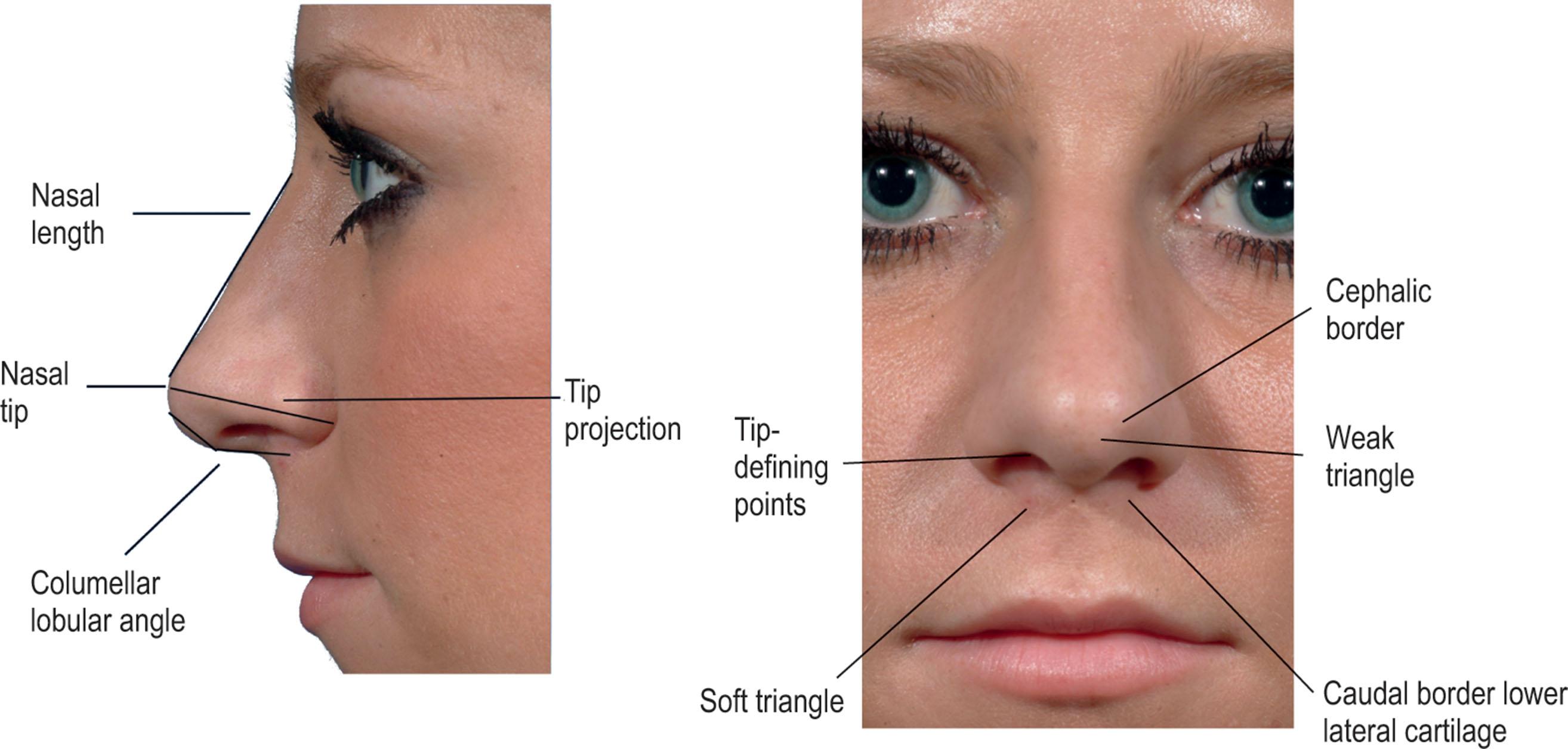
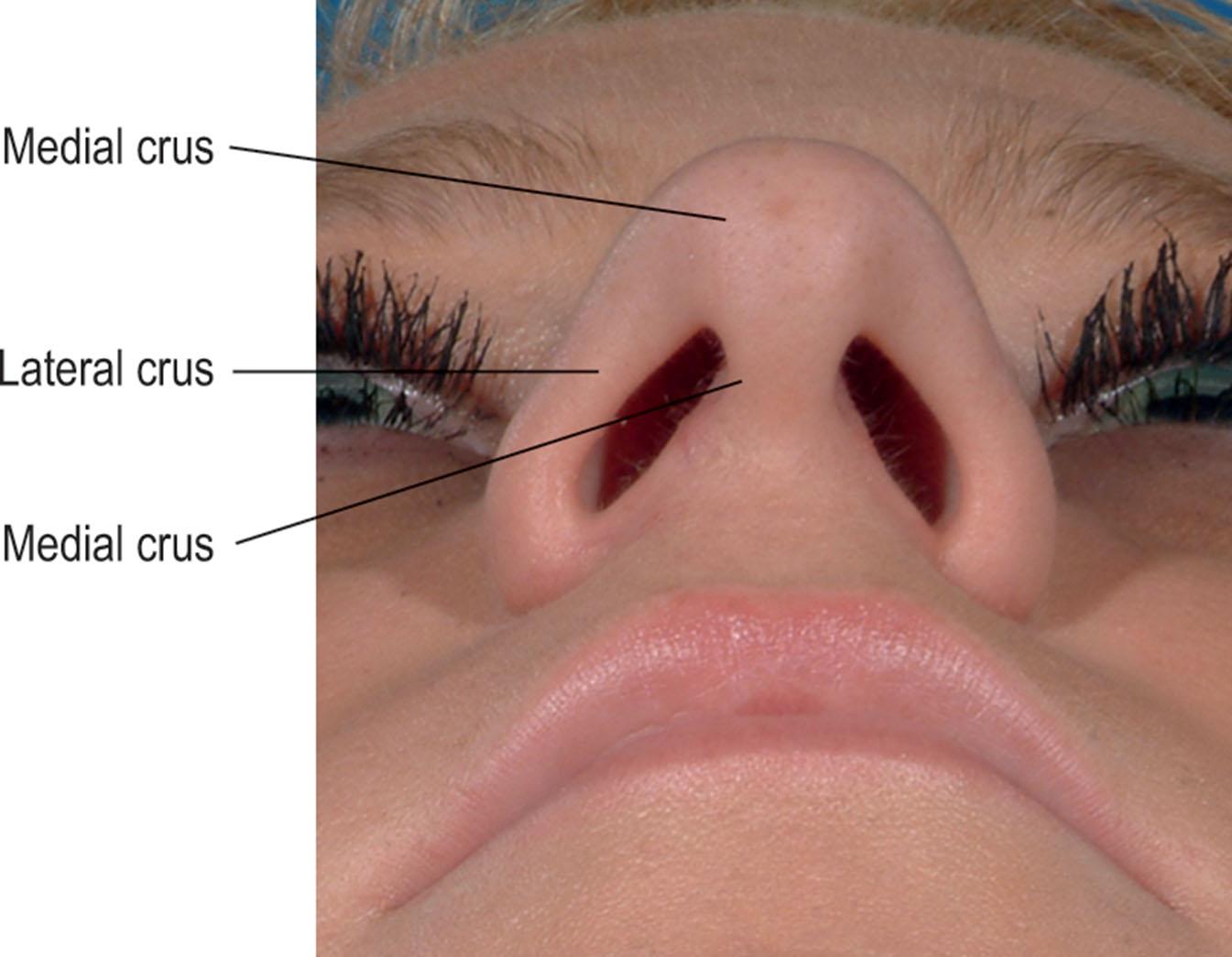
The algorithm for preoperative assessment follows that previously described. First, the relationship of the nose to the face is analyzed. The nose is thus considered in the context of overall facial proportions for precise analysis. A simple technique for understanding facial proportions is the fractal technique of thirds: the upper, middle, and lower face vertical heights are considered to be equal thirds. The lower face is the distance from the alar base to the chin (menton). This is further divided into thirds with the distance from the alar base to lip crease (stomion) being one-third of this height.
Frontal view allows nasal length to be analyzed relative to lower facial proportions. One measurement suggests that the distance from radix to tip-defining points is equal to the distance from stomion to menton ( Fig. 18.5 ).
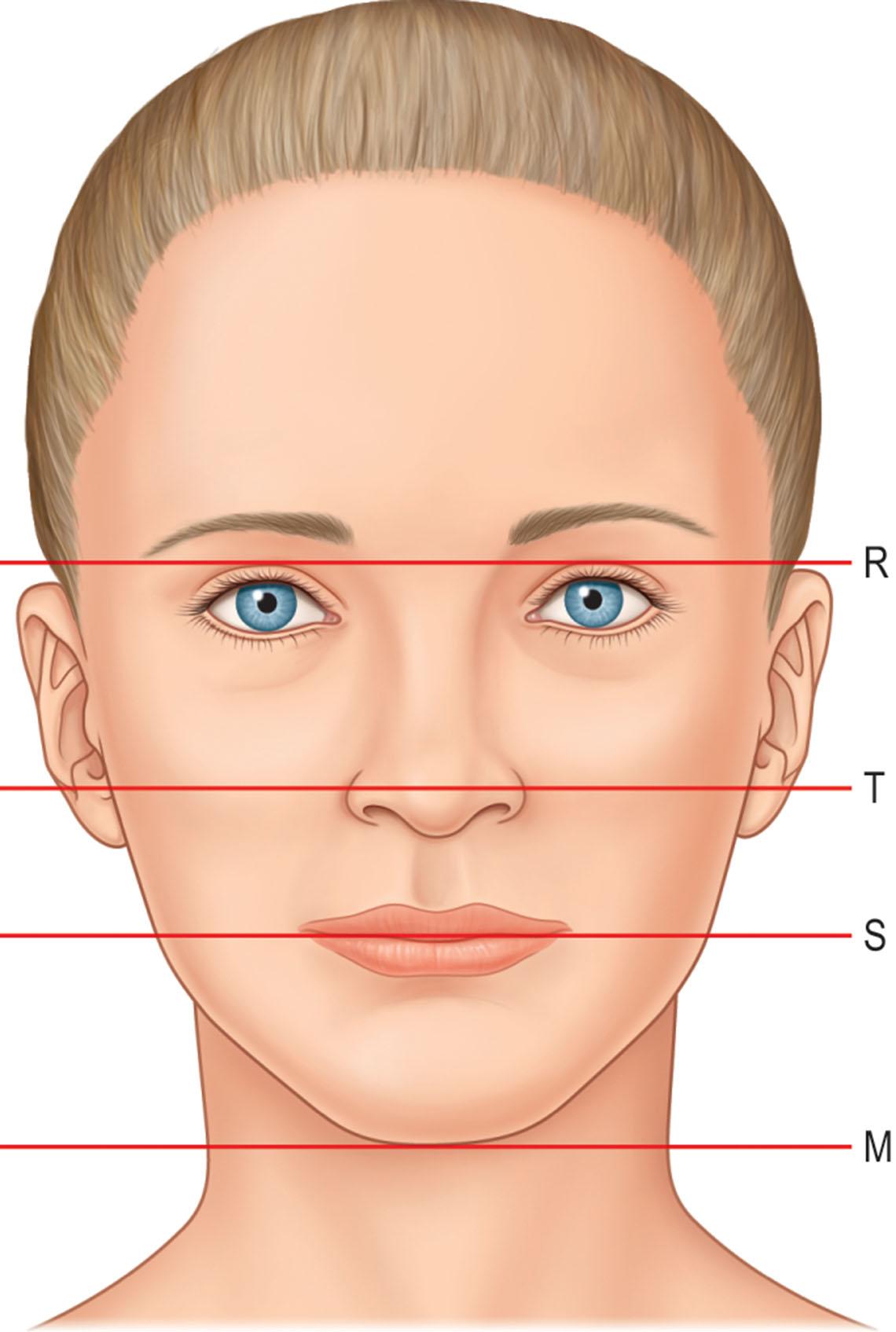
The nose is viewed from the frontal view ( Fig. 18.6 ). A line drawn from the glabella, radix through the middle lip and chin helps to assess nasal deviation. The vertical line drawn from the radix to the midline lip and chin analyzes several structures. It helps to determine septal deviation, the position of the nasal bones and upper vault, and points out asymmetries of the lower lateral cartilages.
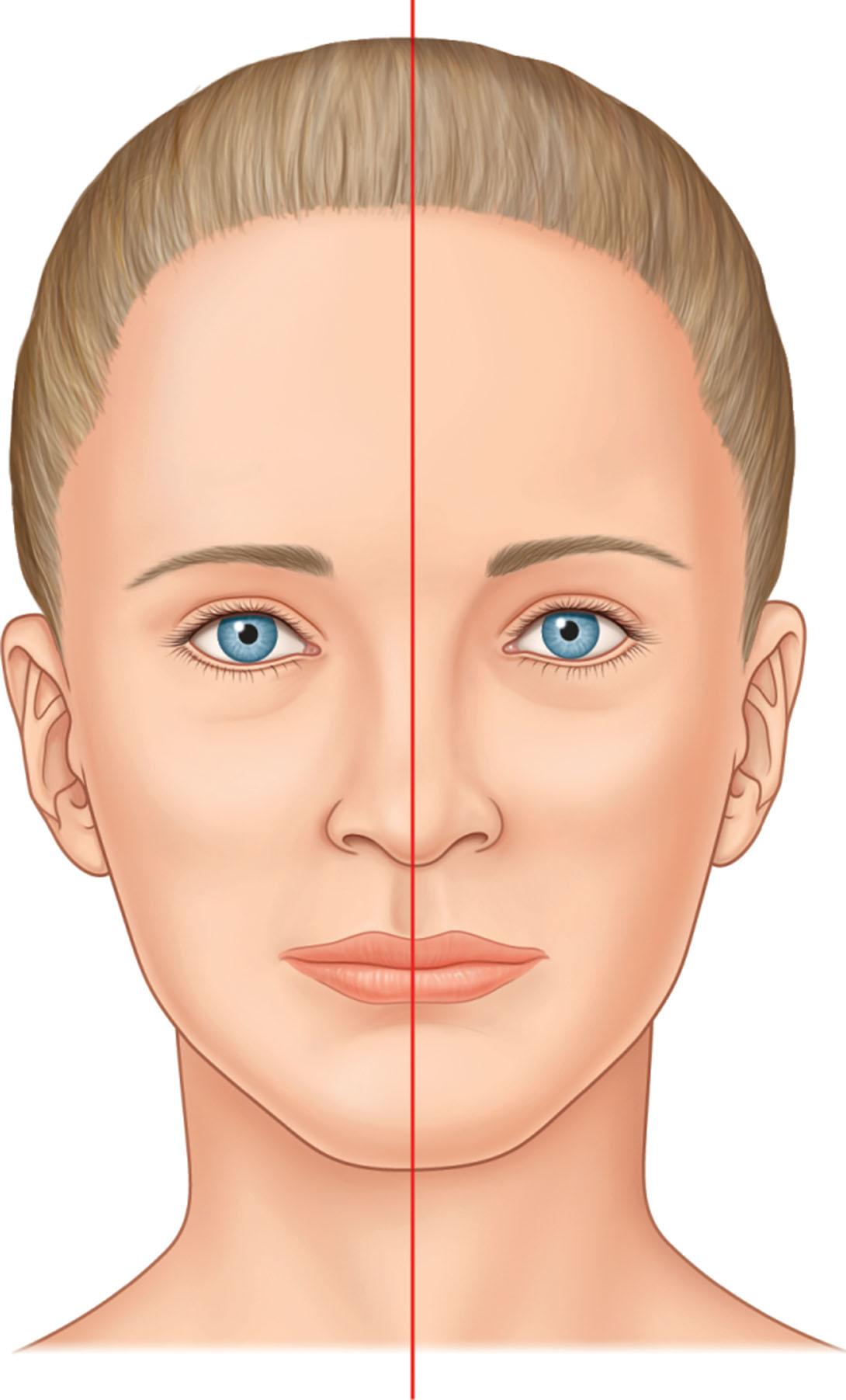
The dorsal aesthetic lines are determined by a line drawn from the medial brow to the tip-defining points and should be two gently diverging curves. These can be judged relative to vertical lines drawn from the medial brows through the lateral nostril ( Fig. 18.7 ).
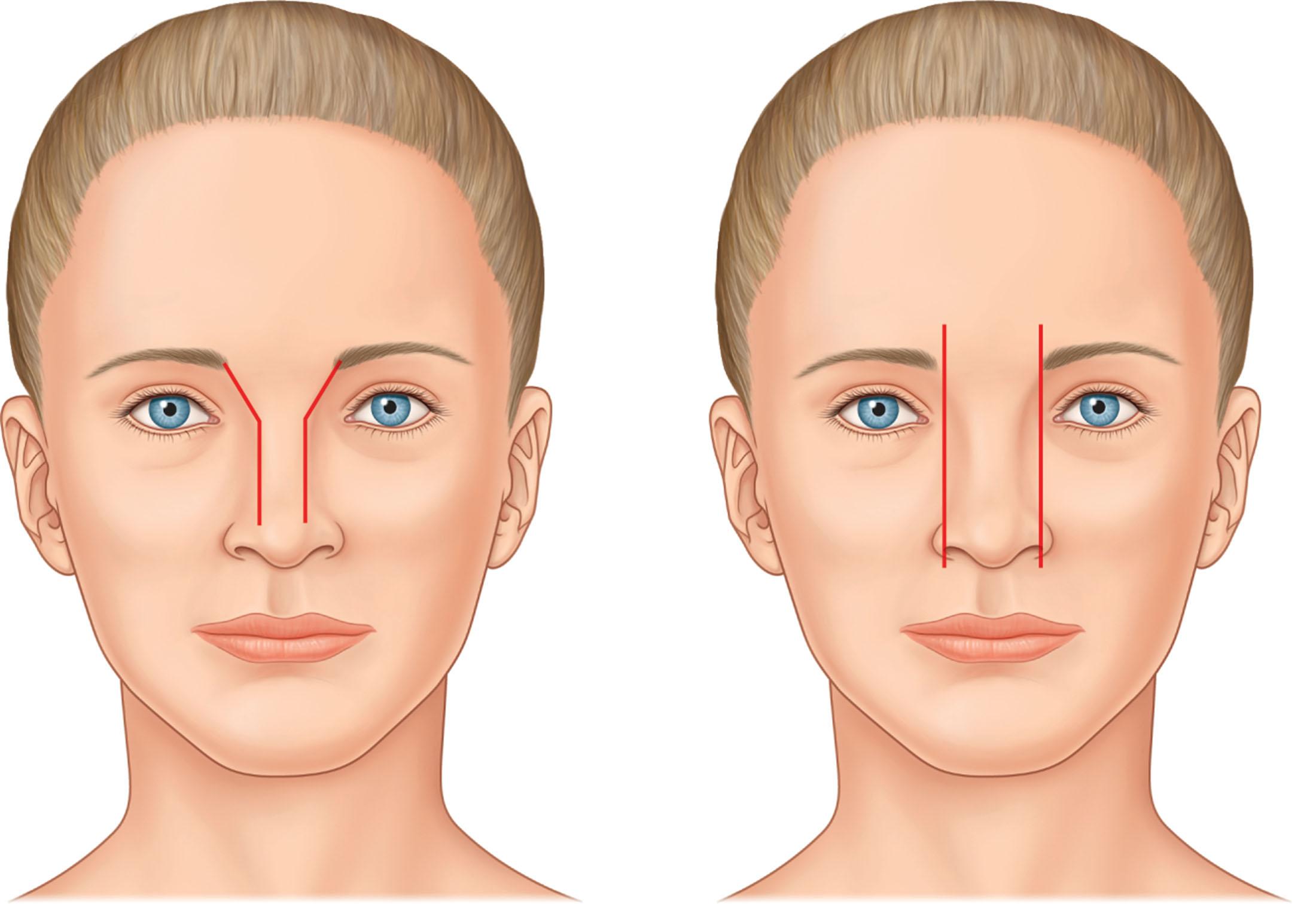
The distance between the alar bases is approximately equal to intercanthal width. Alar shape is analyzed on frontal view and has a gull wing-shaped curve, defined by the curvature of the lateral and middle crura ( Figs. 18.8 & 18.9 ).
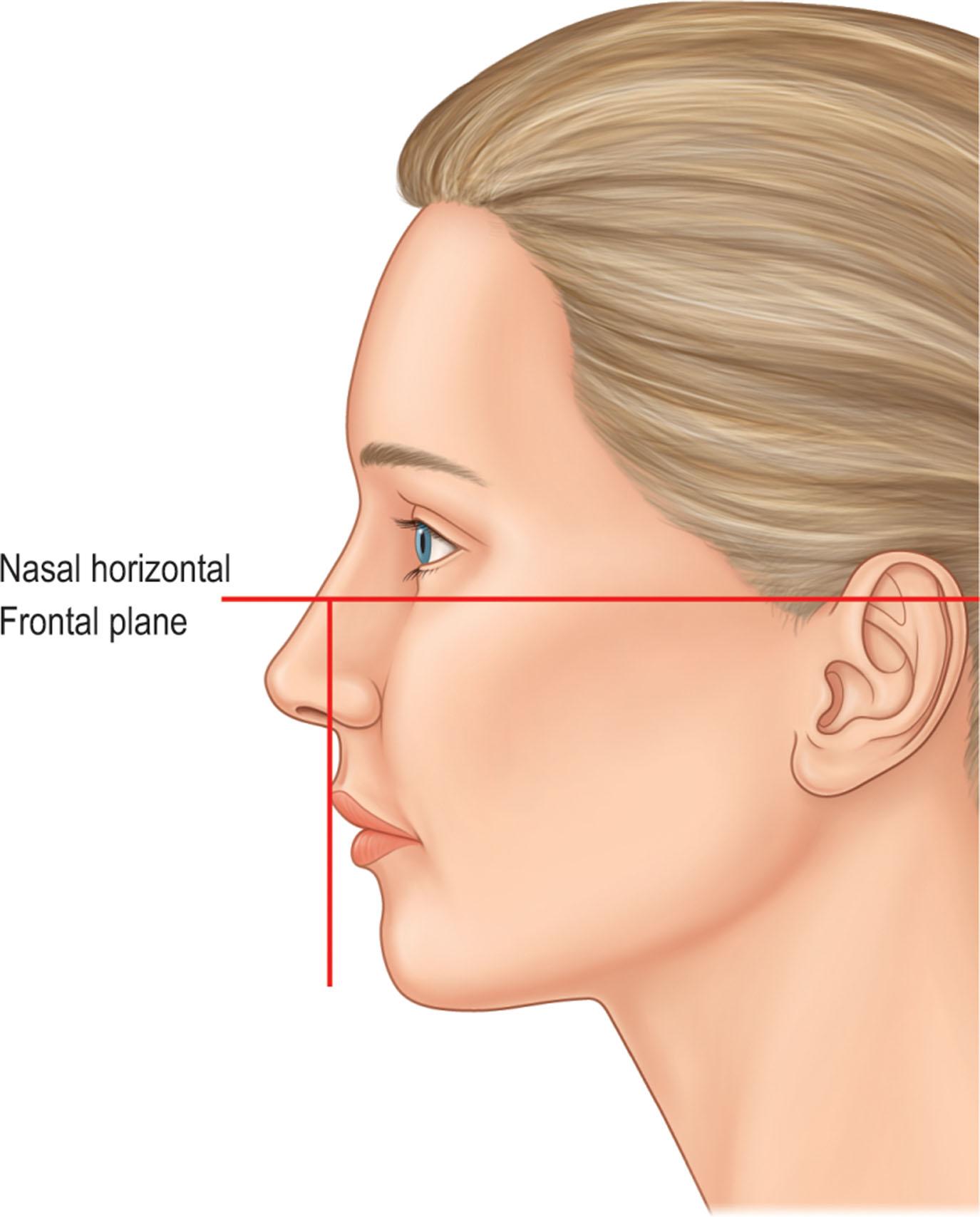
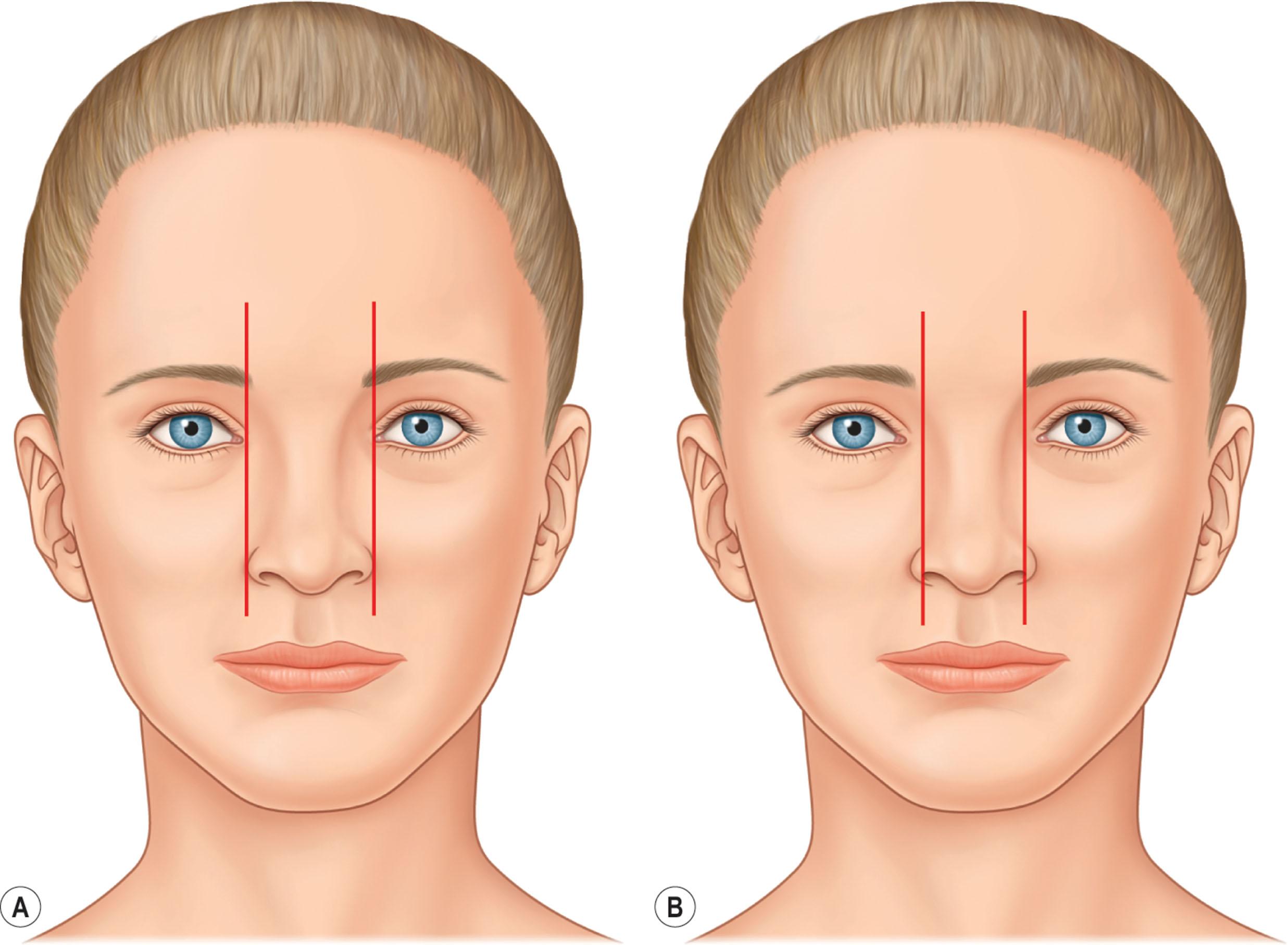
The lateral view is then reviewed. As with the frontal view, the nose is analyzed in the context of position and facial proportions ( Fig. 18.10 ). On lateral view, the alar base should lie slightly anterior to the medial canthus. The upper lip is slightly anterior to the lower lip; the lower lip is slightly anterior to the chin. This analysis can reveal micro- or macrogenia, as well as skeletal disharmonies, including maxillary retrusion with a retrodisplaced alar base.
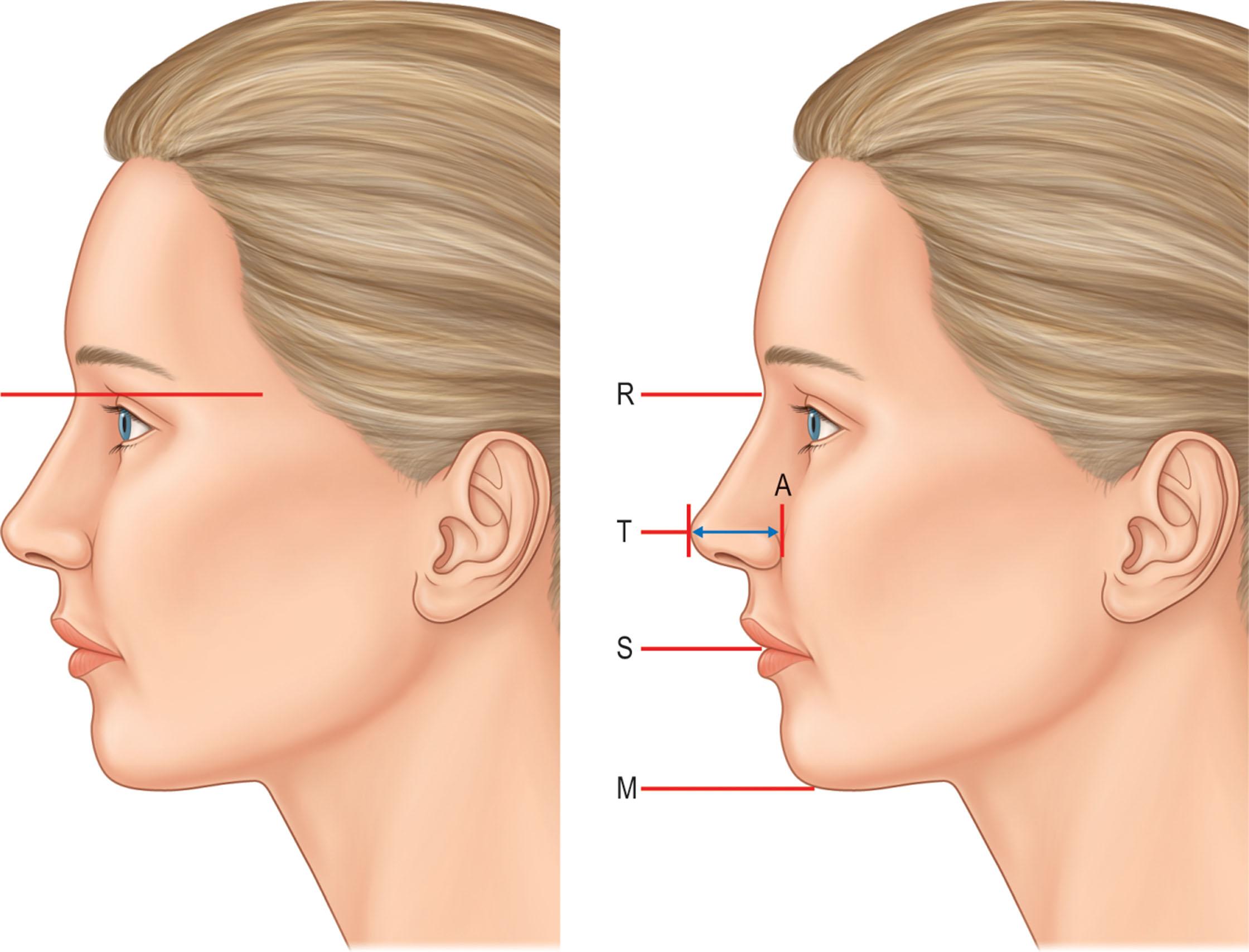
The nose itself is analyzed in lateral view beginning with the position and depth of the nasal root at the nasofrontal angle (radix). The radix lies at a point between the lash line and supratarsal crease with the eyes in horizontal gaze. The depth of the radix, or the nasion–medial canthal distance, is approximately 15 mm.
The radix is an important point that helps to define the nasofrontal angle, defined as the angle formed by the frontal bone and a line drawn parallel to the nasal bone. If the nasofrontal angle is positioned more anteriorly or superiorly than normal, the nose appears elongated, and the tip projection will appear less, while if the nasofrontal angle is more posterior and inferior than normal, the nose will look shorter, and the tip will appear to project more. The radix forms the cephalic end for the measurement of nasal length, which is the distance from the radix to the nasal tip. Normally, nasal length is equal to the distance from stomion to menton ( Fig. 18.11 ).
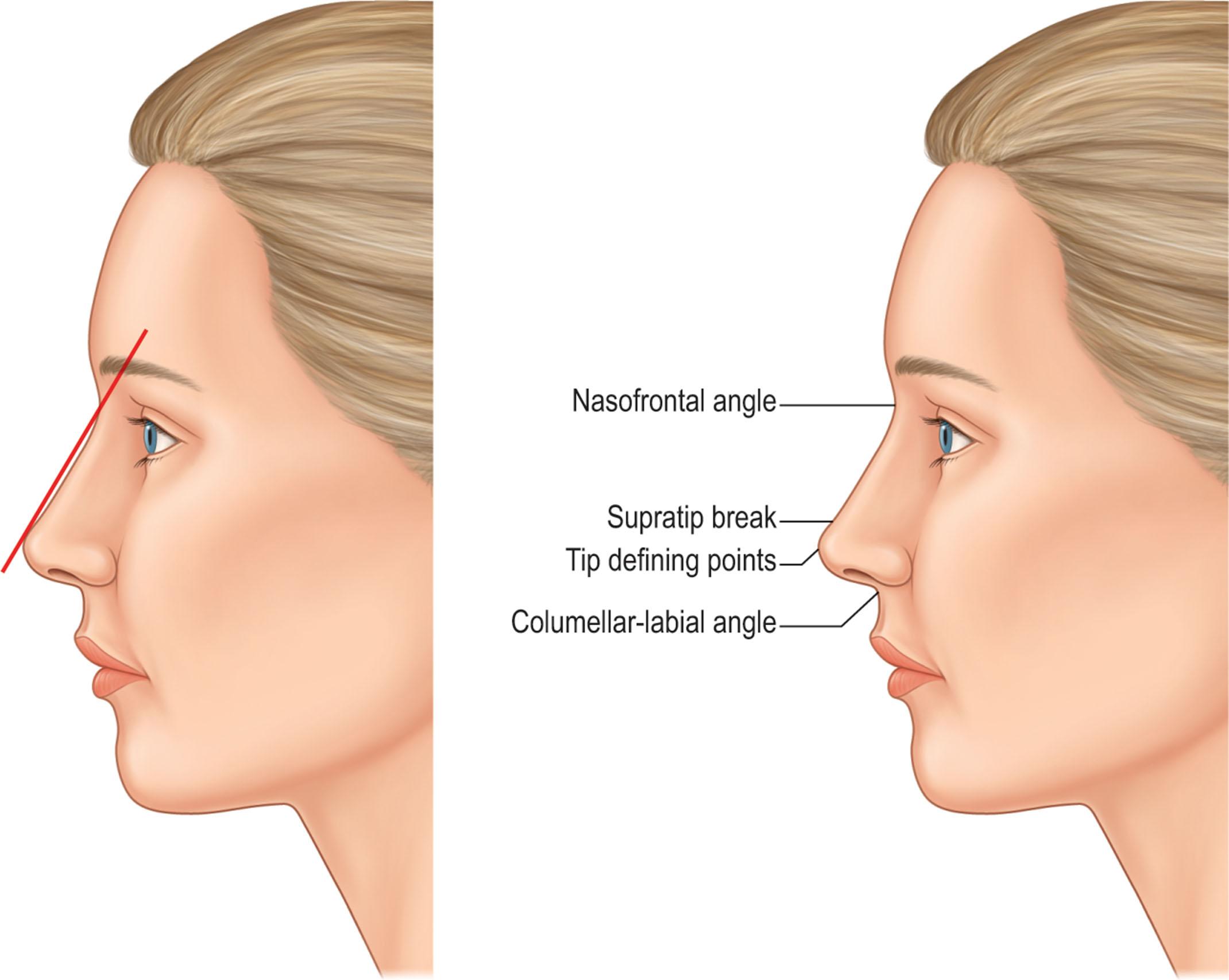
The nasal dorsum is then analyzed. Ideally, the nasal dorsum lies slightly behind a line drawn from the radix to the nasal tip, more so in females than in males. The supratip break occurs cephalad to the tip-defining points and 2–3 mm behind the line from radix to nasal tip in women ( Fig. 18.12 ). A slightly lower value is more desirable in males.
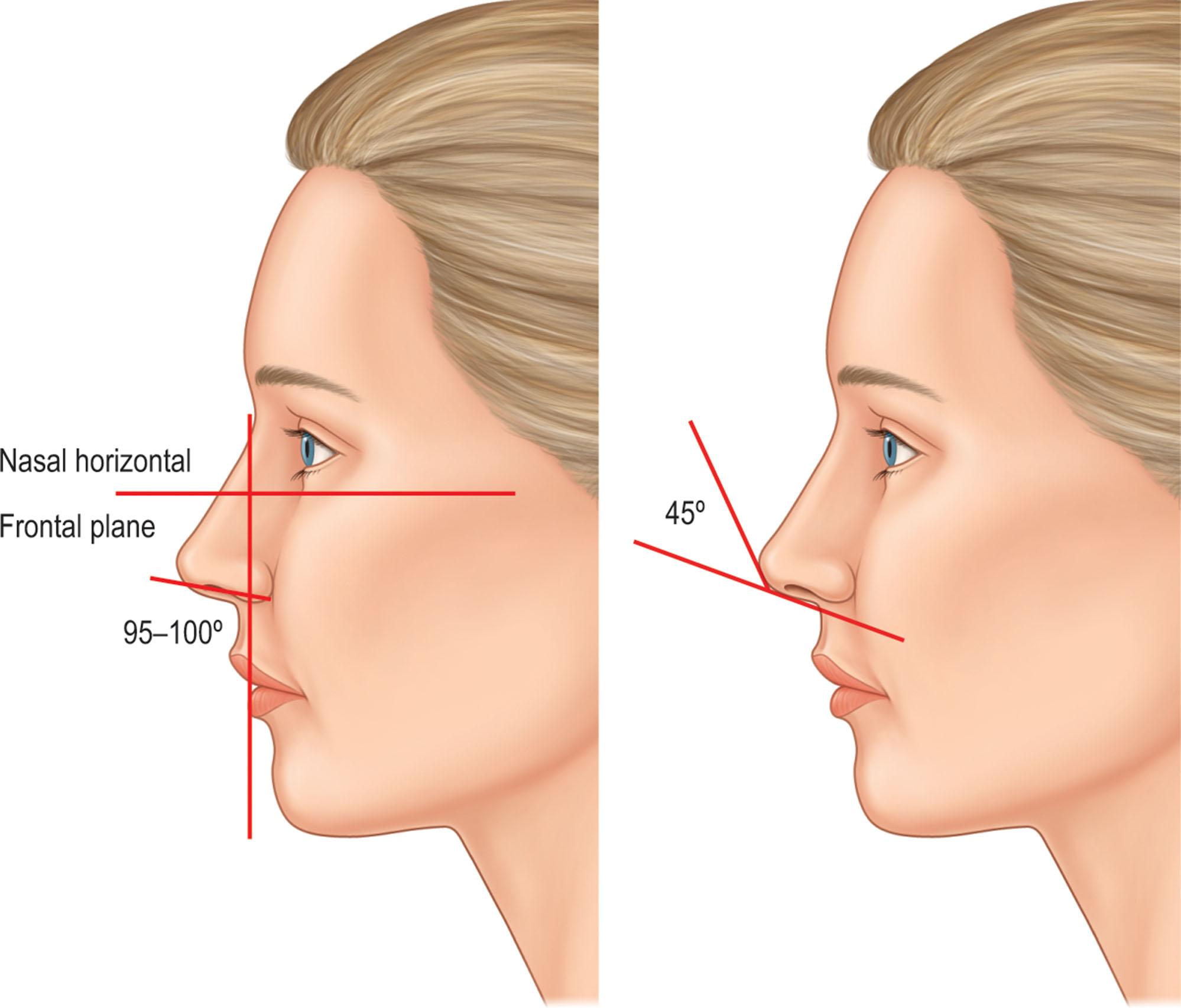
The nasolabial angle is then assessed. It is formed by a line drawn through the anterior and posterior ends of the nostril and the vertical facial plane. The nasolabial angle is usually 95–100° in females and 90–95° in males ( Fig. 18.13 ). This is slightly different than the columellar–labial angle, which is formed by the columella and the upper lip, an angle that is often influenced by a prominent caudal septum, which gives the impression of increased tip rotation despite a normal nasolabial angle.
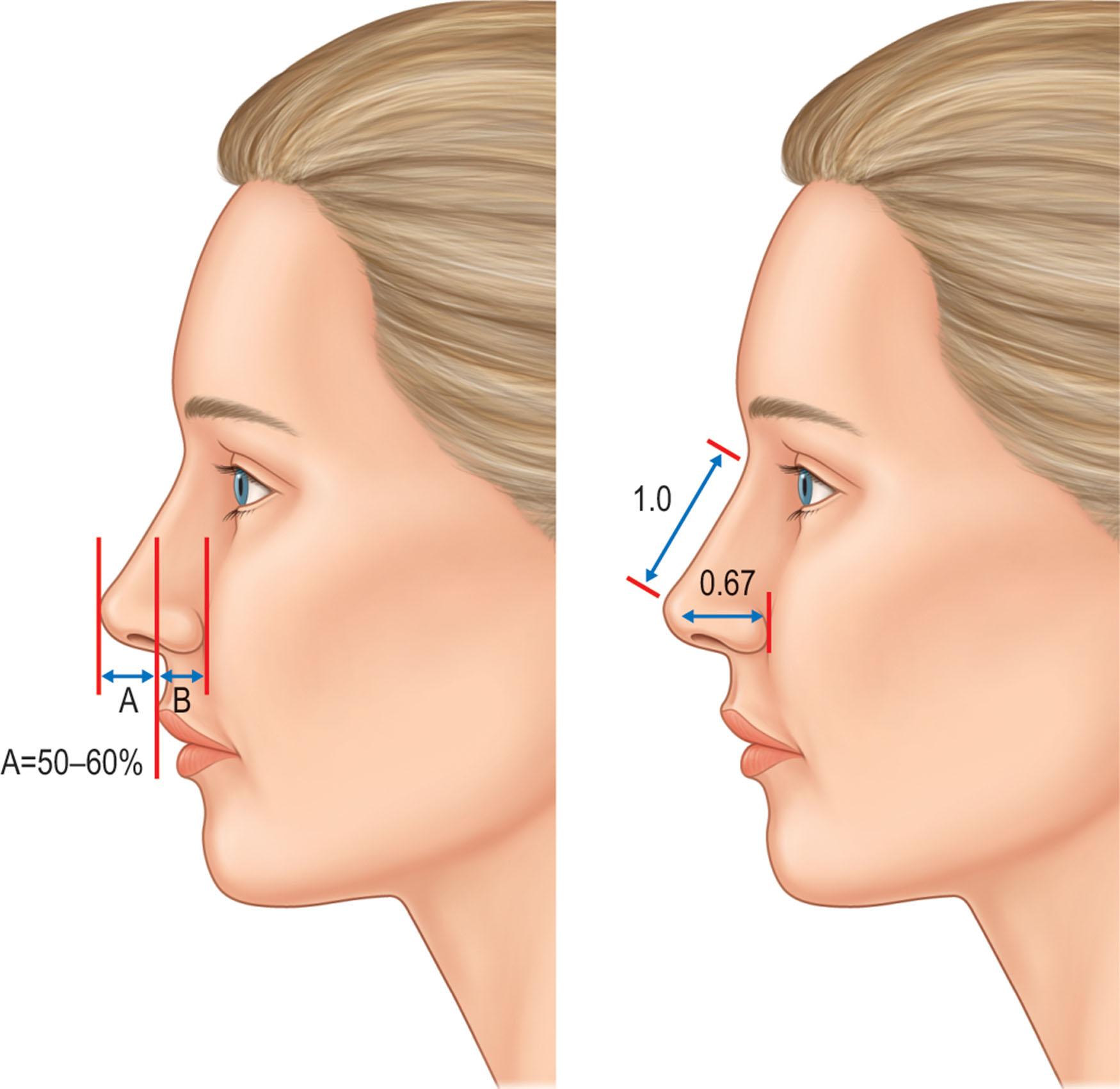
Another determinant of tip rotation is the columellar–lobular angle, formed at the junction of the columella and the infratip lobule. The columellar–lobular angle represents the junction between the middle and medial crura. The ideal columellar–lobular angle is 30–45° in females.
The relationship between the ala and columella is then assessed. A line drawn through the long axis of the nostril should bisect the oval formed by the nostril in lateral view ( Fig. 18.14 ). A greater distance below the long axis may indicate a hanging columella, and a greater distance above the long axis may indicate retracted ala. This issue is reviewed more thoroughly in Chapter 19 .
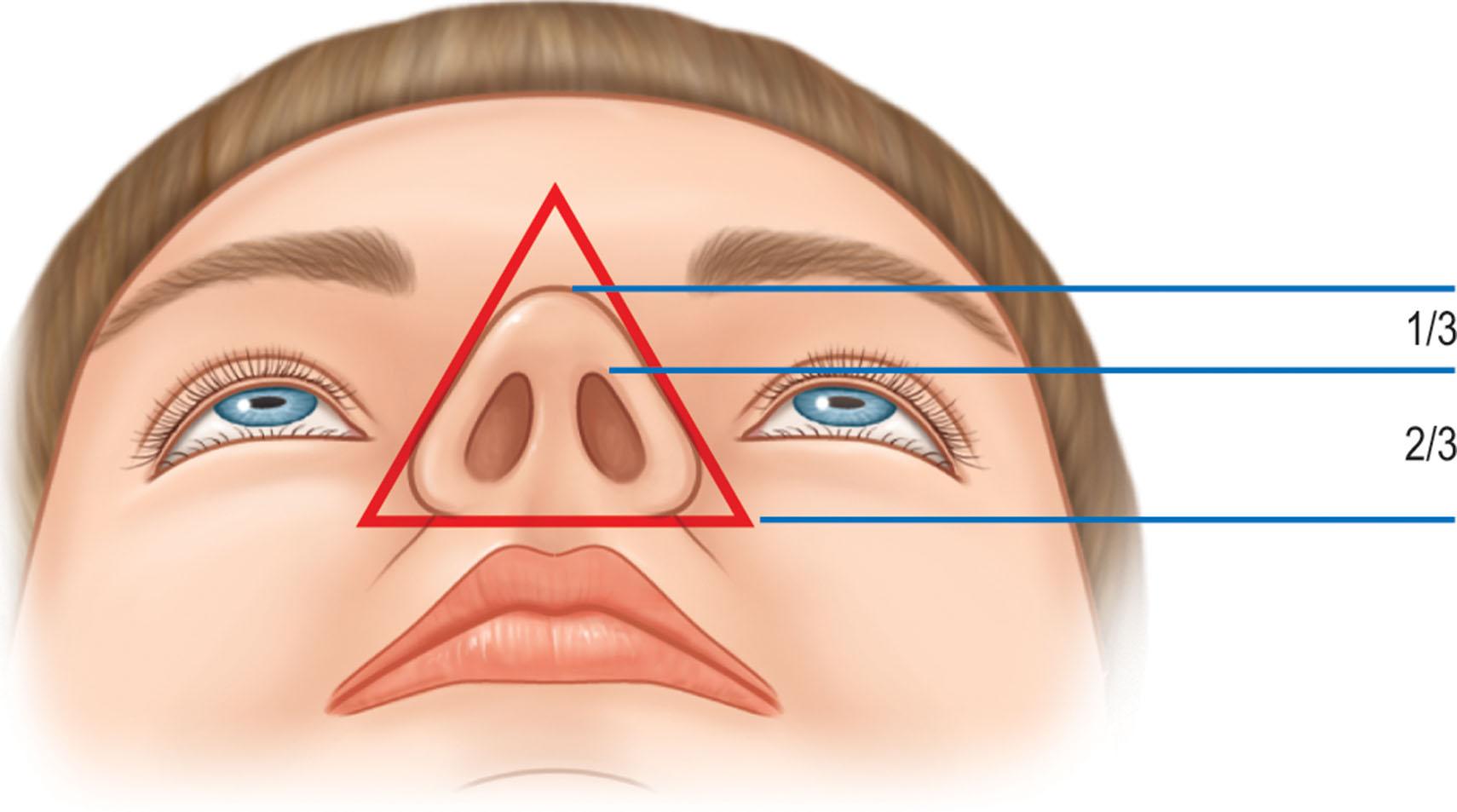
Tip projection is then assessed. Tip projection is defined as the distance from alar base to the nasal tip (see Fig. 18.13 ). If 50–60% of the tip lies anterior to the vertical line adjacent to the most projecting part of the upper lip, tip projection is considered normal. If it is >60%, the tip may be overprojected. Inadequate tip projection is suggested by a value <50%.
Similar to the rule of thirds used to evaluate the nasal proportions relative to the overall face, tip projection is 0.67 of total nasal length as measured from radix to tip-defining points. If the ratio is <0.67, this indicates inadequate tip projection.
The basal view provides information regarding alar shape, tip projection, and alar width. The base of the columella and alar rims should form an equilateral triangle (see Fig. 18.14 ). The infratip lobule is one-third of the distance from alar base-to-tip. The alar base view also visualizes alar base width and alar flaring. The alar rims on basal view should have a flare of 2 mm. Any asymmetries in alar shape are noted. This analysis provides the information necessary to formulate a detailed operative plan including the techniques required to meet the surgical goals.
The technical maneuvers of open rhinoplasty are facilitated by an understanding of the details of nasal anatomy. Blood supply to the nasal tip is the one anatomical point of overwhelming significance that has contributed most to the safety of open rhinoplasty. Understanding the vascular supply of the nose, and how to preserve its intricate network, enhances the safety of the open approach in not only primary rhinoplasties, but secondary and tertiary procedures as well.
Become a Clinical Tree membership for Full access and enjoy Unlimited articles
If you are a member. Log in here